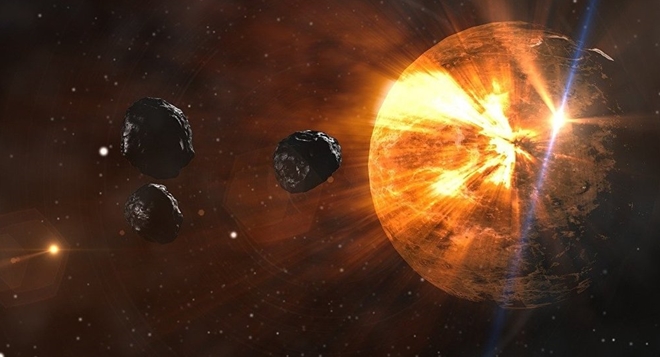NASA Will Train to Defend Earth From Asteroid Impact
For years, the National Aeronautics and Space Administration and other organisations have been scanning the skies for asteroids and comets travelling close to Earth, studying the possible hazards that such objects might entail. During special drills, they are now set to exercise what to do if the worst-case scenario becomes reality.
 |
| Photo: Pixabay. |
NASA, along with other US agencies and scientific institutions, will participate in a "tabletop exercise" to train for what to do if a so-called near-Earth object (NEOs) is poised to hit Earth. According to the Jet Propulsion Laboratory, they hope to improve their response to the celestial threat during the 2019 Planetary Defence Conference, scheduled for next week.
Attendees of the conference will play out a fictional NEO impact scenario, developed by the lab. Such emergency simulations are standard for disaster management planning.
"These exercises have really helped us in the planetary defence community to understand what our colleagues on the disaster management side need to know. This exercise will help us develop more effective communications with each other and with our governments”, NASA's Planetary Defence Officer Lindley Johnson said, as cited in the press release.
Although the scenario is not tightly scripted, as it is designed to gather and evaluate the responses of participants in a pressing situation, there are a few input conditions. According to the fictional script, astronomers spotted a hazardous NEO on 26 March and tracked the asteroid, dubbed 2019 PDC, for a "few months”, predicting that it poses a 1 in 100 chance of impact with Earth in 2027.
They will then have to come up with a preparation plan to deflect the hazard and mitigate its potential effects. This is not the first time that NASA has taken part in such drills. Apart from three exercises at Planetary Defence Conferences over the past six years, it has also teamed up with the Federal Emergency Management Agency (FEMA), as well as with the Departments of Defence and State three times.
Apart from such table top exercises, NASA is also getting ready for its first spacecraft impact asteroid redirect mission. The test, titled Double Asteroid Redirection Test (DART), is scheduled for June 2021. One of SpaceX’s Falcon 9 rockets will launch in the direction of asteroid 65803 Didymos (or “Didymain”) and its tiny satellite "Didymoon" to slightly change its course. For this, the space agency has paid $69 million to Elon Musk’s company.
This year, it was reported that the presidium of the Russian Academy of Sciences (RAS) had agreed to develop a national programme to research issues and methods of countering hazards from space, such as asteroids, comets, and space debris. According to the RAS, researchers have so far detected around 18,000 hazardous objects in space, 99 percent of which are asteroids.
The European Space Agency (ESA) is also closely monitoring the skies for potential hazards. It reported in 2017 that a potential space rock, measuring 15-30 metres (49-98 feet) had flown past the Earth at a distance of 44,000 kilometres (27,340 miles). An asteroid of this size entering the atmosphere would have a similar effect to the Chelyabinsk event, when a 10-tonne meteor exploded over Chelyabinsk Oblast in Russia, resulting in serious damage in the region in 2013.
The event is said to have been the second largest impact after the mysterious Tunguska event on 30 June 1908. Then, Eastern Siberia was hit by an explosion, generally attributed to an air burst of a comet or a meteorite. According to various scientific estimations, about 850 square miles (2,200 square kilometres) of local forest was flattened.

